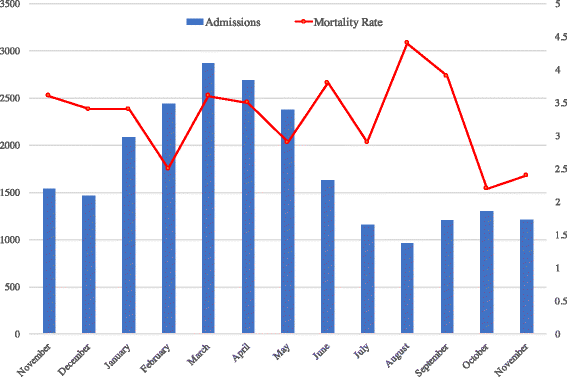A pediatric death audit in a large referral hospital in Malawi
- PMID: 29466967
- PMCID: PMC5822526
- DOI: 10.1186/s12887-018-1051-9
A pediatric death audit in a large referral hospital in Malawi
Abstract
Background: Death audits have been used to describe pediatric mortality in under-resourced settings, where record keeping is often a challenge. This information provides the cornerstone for the foundation of quality improvement initiatives. Malawi, located in sub-Saharan Africa, currently has an Under-5 mortality rate of 64/1000. Kamuzu Central Hospital, in the capital city Lilongwe, is a busy government referral hospital, which admits up to 3000 children per month. A study published in 2013 reported mortality rates as high as 9%. This is the first known audit of pediatric death files conducted at this hospital.
Methods: A retrospective chart review on all pediatric deaths that occurred at Kamuzu Central Hospital (excluding deaths in the neonatal nursery) during a 13-month period was done using a standardized death audit form. A descriptive analysis was completed, including patient demographics, HIV and nutritional status, and cause of death. Modifiable factors were identified that may have contributed to mortality, including a lack of vital sign collection, poor documentation, and delays in the procurement or results of tests, studies, and specialist review.
Results: Seven hundred forty three total pediatric deaths were recorded and 700 deceased patient files were reviewed. The mortality rate by month ranged from a low of 2.2% to a high of 4.4%. Forty-four percent of deaths occurred within the first 24 h of admission, and 59% occurred within the first 48 h. The most common causes of death were malaria, malnutrition, HIV-related illnesses, and sepsis.
Conclusions: The mortality rate for this pediatric referral center has dramatically decreased in the 6 years since the last published mortality data, but remains high. Areas identified for continued development include improved record keeping, improved patient assessment and monitoring, and more timely and reliable provision of testing and treatment. This study demonstrates that in low-resource settings, where reliable record keeping is often difficult, death audits are useful tools to describe the sickest patient population and determine factors possibly contributing to mortality that may be amenable to quality improvement interventions.
Keywords: Death audits; Global Health; Pediatric emergency medicine.
Conflict of interest statement
Consent for publication
Not applicable
Competing interests
The authors declare that they have no competing interests.
Publisher’s Note
Springer Nature remains neutral with regard to jurisdictional claims in published maps and institutional affiliations.
Figures
References
Publication types
MeSH terms
LinkOut - more resources
Full Text Sources
Other Literature Sources


